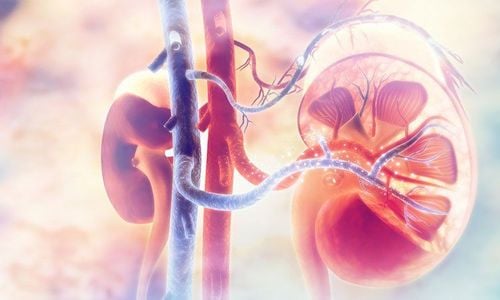This is an automatically translated article.
Posted by Master, Doctor Lam Thi Kim Chi - Doctor of Radiology - Department of Diagnostic Imaging - Vinmec Danang International General HospitalInfants and young children are very susceptible to gastroesophageal reflux. When a baby suckles, milk travels from the mouth to the stomach through the esophagus. The esophageal sphincter acts as a one-way valve preventing milk from going in the opposite direction. Reflux occurs when food in the stomach moves back up into the mouth, causing a child to vomit or spit up. Usually, reflux in infants and young children is rarely serious and may go away on its own. However, if a child over 18 months of age continues to have this condition, it can be considered abnormal. In this case, the doctor may order an ultrasound to diagnose gastroesophageal reflux disease.
1. Causes of gastroesophageal reflux in children
Some causes of gastroesophageal reflux in children are as follows:
Newborns, the heart valve muscles are weak and spongy, so milk and air in the stomach easily pass through. In young children, the stomach is horizontal, the gastroesophageal angle is an obtuse angle, so it is easy to reflux. Children are often in a lying position, on a liquid diet. Children eat too much and fast, suck and swallow a lot, pyloric stenosis ... Children with food intolerance, esophagitis...

2. High-risk group for gastroesophageal reflux disease
As a common medical condition, however, children in the high-risk group for gastroesophageal reflux disease can include the following:
Neuropathy: cerebral palsy History of atrophy of the esophagus Slit hernia esophagus, achalasia, obesity, chronic respiratory disease: laryngospasm, bronchial asthma, bronchopulmonary dysplasia, cystic fibrosis Preterm birth
3. Clinical manifestations are often diverse
Some clinical signs to recognize children with gastroesophageal reflux disease are as follows:
Digestion: vomiting, regurgitation, abdominal pain (crying, refusing to suck...), anemia, malnutrition.. Respiratory - Otolaryngology: Recurrent pneumonia, wheezing, asthma, laryngitis, laryngeal softening, otitis media. Severe manifestations: cyanosis, apnea, bradycardia MORE: Do not ignore gastroesophageal reflux in infants

4. When to bring the child to the doctor?
Gastroesophageal reflux in children if not examined and treated, to the late stage can cause dangerous complications. Therefore, when the child has the following signs, parents need to take the child to a medical center for examination and treatment:
No weight gain Food, liquid from the stomach forcefully out of the child's mouth Refuse food Blood in stool Difficulty breathing or persistent cough Unusual irritability when eating Cough, difficulty breathing, wheezing again.
5. How does an ultrasound of gastroesophageal reflux happen?
Ultrasound is a non-invasive, painless, short survey time, without radiation exposure. Accordingly, ultrasound helps survey reflux after eating. Therefore, parents should give the baby a full meal before entering the ultrasound room.
When entering the ultrasound room, the baby is lying on his back on the bed. The doctor placed the ultrasound probe right in the epigastrium, conducted a survey of the shape and flow of gastroesophageal reflux.

6. Ultrasound results of gastroesophageal reflux - esophagitis
The picture of the esophagus in children with gastroesophageal reflux is shown as follows:
The length of the abdominal esophagus is about 20-25mm. Normal abdominal esophageal thickness <8-10mm Esophageal wall thickness <4mm Check for pyloric stenosis? Look for hiatal hernia, double esophagus Compressing internal or external tumors. Dynamic examination assesses cardiac opening and retrograde accessory flow and the number of reflux episodes observed within 10 min.
Gastroesophageal reflux disease (GERD) should be performed by a physician who is trained, experienced, and patient with children.
With many years of experience in examining and treating diseases in children, now the Pediatrics Department at Vinmec International General Hospital has become one of the major health care centers, fully equipped with medical equipment. Medical equipment, modern ultrasound system, along with a team of skilled doctors, help improve the ability to diagnose and treat gastroesophageal reflux in pediatric patients.
Therefore, if the child shows signs of gastroesophageal reflux disease, parents can take the child to Vinmec International General Hospital to examine and receive support and advice from doctors.
Please dial HOTLINE for more information or register for an appointment HERE. Download MyVinmec app to make appointments faster and to manage your bookings easily.














